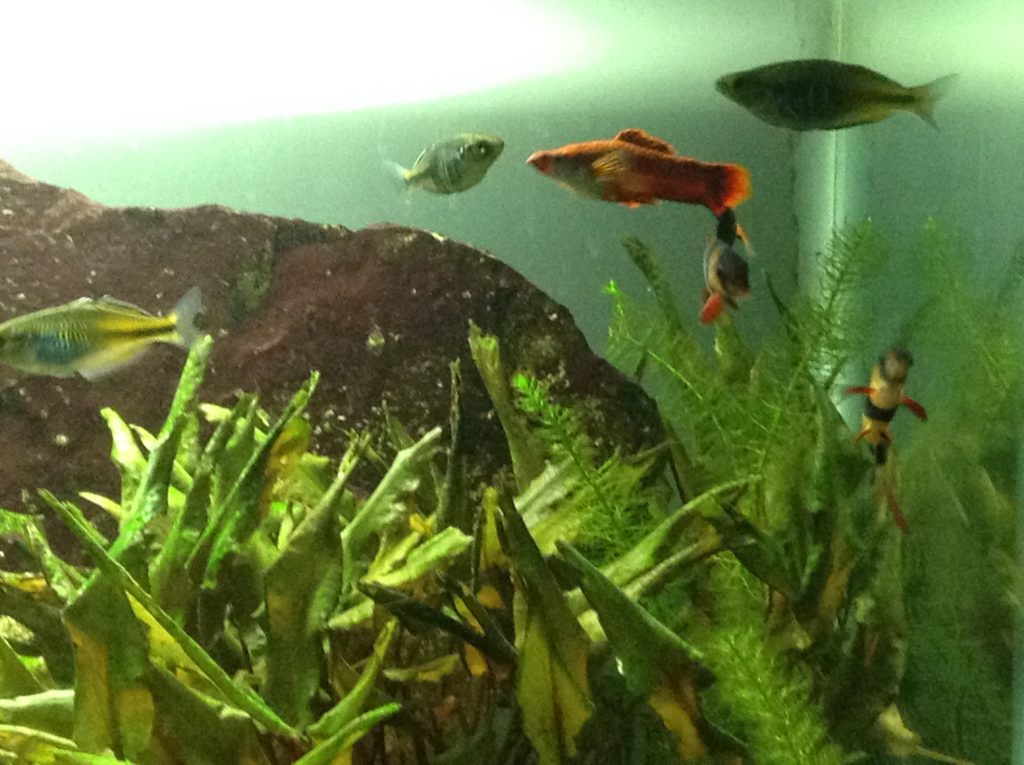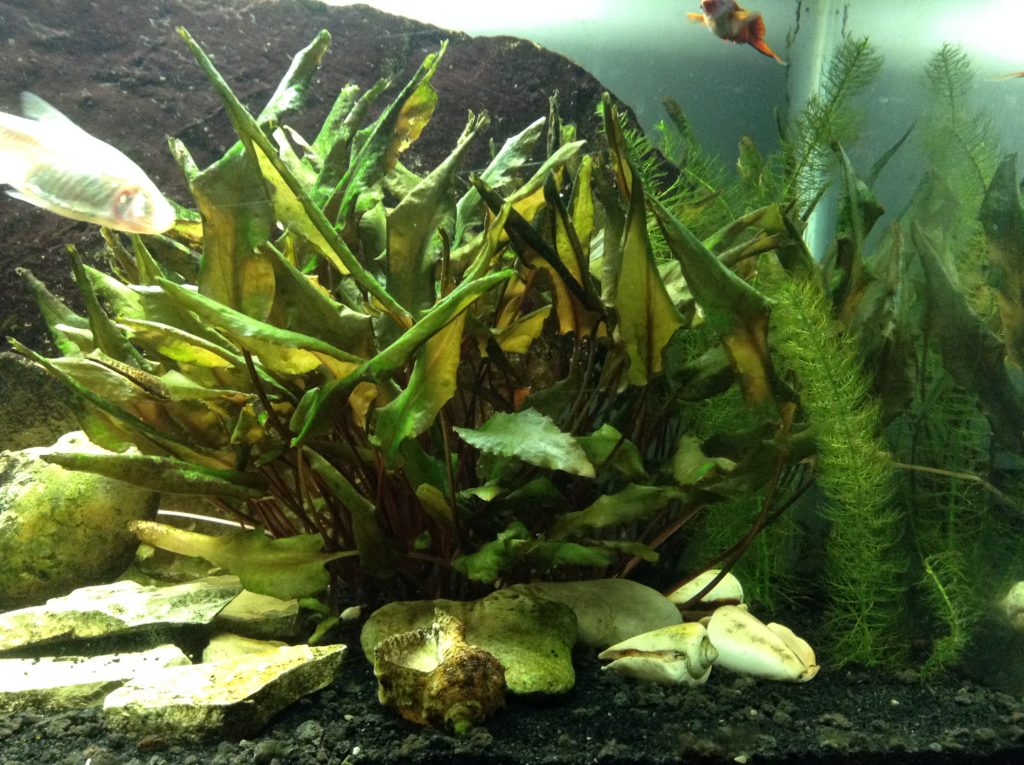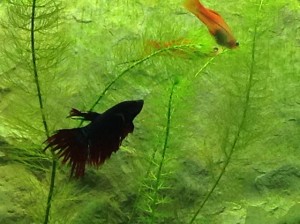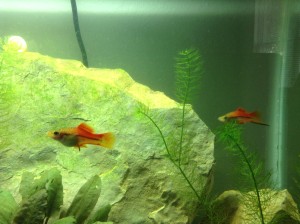After a long hiatus, I am in the early stages of setting up a new 30-gallon planted freshwater aquarium.
The very first step was the tank, a used 30 gallon, with stand, for only $40. Just the right pitch to get me back in the game for a nice freshwater aquarium. In the past, I have had another 30-gallon nearly identical to this, a 28-gallon bowfront that never quite got the use it deserved, a 55-gallon Walmart standard that worked out very well for very long, and a couple 10-gallon tanks that served as sick tanks for fish and grow-out tanks for plants. Unfortunately, I never had all of this going at the same time, but they worked well. I still have a nice retrofitted 55-Watt compact flourescent light hood that should fit nicely atop this 30-gallon tank. Thankfully, the tank came with a glass cover that will match perfectly my light.
The next step was rock collection. A goodly collection of background and foreground rocks were acquired over the Easter holidays. Since the rocks had been outside, they were cleaned, scrubbed, and submerged to help diffuse any potential pollutants or unwanted land creatures.

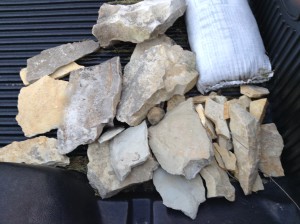
First up: a piece of petrified wood contributed by my father, and the leftovers that haven’t quite made it to the aquarium yet. Plenty of small, thin pieces to serve as accents around plants or to pile to aid the illusion of a wider tank. Also, a healthy number of large shards.

The rest are pretty attractive, with one great find for a perfect background rock. It’s a nice large slab, about an inch and a half thick, with plenty of character. This will work nicely. I’m looking forward to planting some java fern and java moss on it. The foreground rocks were pretty good finds as well, some nice bluish/purplish banded crystallized color in two, and a lovely egg shape for the other two. The piece in the middle cracked shortly after I gathered it, but I think the crack will actually work well. It should act as a nice hiding spot in the foreground for skittish fish, and it’s a great place for a cryptocoryne.
Next steps … a quality substrate for planted aquaria, and a choice of fish. Flourish from Seachem is about the perfect substrate for a planted aquarium, so I am leaning toward that, but a recent search turned up some other interesting competitors.
For fish? Cory cats, flying foxes, clown loaches, rainbowfish of all varieties (especially threadfins), gouramis, and possibly some neons or rasbora tetras. My boys seem to be enthralled with meat eaters, so I think they may be a bit disappointed with my selections.
 Over the past month or more, a serious case of crypt rot has affected the tank. A variety of tank changes, and possibly lack of care, have resulted in the two largest cryptocoryne plants dying off by about half. Among the changes, the stem plants (I believe hornwort) have grown dramatically of late, the black nerite snails have grown very well and done an excellent job of reducing algae growth on the rocks and tank, and the blind cave fish died. The blind cave fish may have been nibbling the hornwort regularly, keeping it in check and preventing it from choking out the slower-growing crypts. Also, I ran out of Flourish and stopped supplementing the tank for plant food for some time. A few regular tank changes, trimming back the hornwort significantly, and reintroducing Flourish seems to have helped stop most of the crypt rot.
Over the past month or more, a serious case of crypt rot has affected the tank. A variety of tank changes, and possibly lack of care, have resulted in the two largest cryptocoryne plants dying off by about half. Among the changes, the stem plants (I believe hornwort) have grown dramatically of late, the black nerite snails have grown very well and done an excellent job of reducing algae growth on the rocks and tank, and the blind cave fish died. The blind cave fish may have been nibbling the hornwort regularly, keeping it in check and preventing it from choking out the slower-growing crypts. Also, I ran out of Flourish and stopped supplementing the tank for plant food for some time. A few regular tank changes, trimming back the hornwort significantly, and reintroducing Flourish seems to have helped stop most of the crypt rot.




